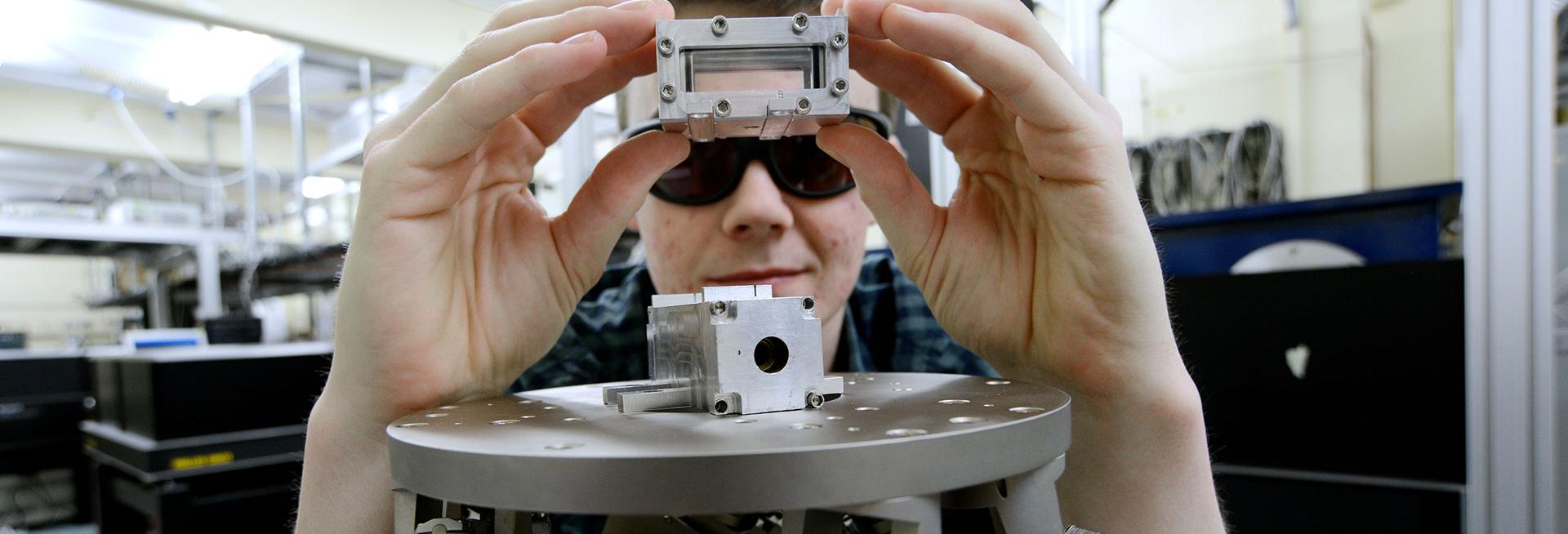Hugely successful businesses have grown out of our research and our recent ventures include harnessing the potential of quantum physics in its many guises as well as developing next generation materials to revolutionise renewable energy.
We have a rich history of formulating spin-out companies and the University of Oxford's first spin-out, Oxford Instruments, was founded from the Department of Physics by Sir Martin and Lady Audrey Wood in 1959; today, Oxford Instruments is a leading provider of high technology tools and systems for research and industry.
Our physicists play a key role in founding these new companies that solve societal challenges and provide high-skilled jobs locally.
Quantum Fabrix
(2025) Focussing on trapped ions to deliver scalable products for quantum computing, communication, and sensing.
Originated from research on ion trap quantum computing.
Lumai
(2022) Optical computing with photonics and machine learning.
Originated from research on quantum optical technology.
Pictura Bio
(2021) Building instant pathogen tests.
Originated from research on super-resolution microscopy and machine learning.
Curacode
(2021-2022) Developed innovative anti-counterfeiting technology.
Originated from research on laser technology.
Quantum Dice
(2020) Commercialising the first compact, completely embedded, self-certified quantum random-number generator, providing quantum security for encryption.
Originated from research on quantum optics.
Living Optics
(2020) Redefining hyperspectral imaging via an algorithmic approach, improving efficiency, resolution and enabling unprecedented miniaturisation.
Originated from research on plasma wakefield.
ORCA Computing
(2019) Building the first scalable and flexible quantum computer powered by photonics.
Originated from research on quantum information and quantum optics.
Mach42
(2019) Develops and commercialises acceleration and optimisation software for quantum physics.
Originated from research on high-energy-density physics.
Oxford Ionics
(2019) Building high-performance quantum computers based on electronically controlled trapped-ion qubits.
Originated from research on ion trap quantum computing.
Helio Display Materials
(2018) Exploiting novel light-emitting perovskites in optoelectronic devices such as displays and lighting.
Originated from research on perovskite solar cells.
1715 Labs
(2018-2022) Explored how businesses can make use of citizen science software tools to classify and label images, text, audio, and video to solve commercial problems.
Originated from astrophysics research using citizen science.
Oxford Quantum Circuits
(2017) Developing a scalable quantum-computing technology based on superconducting circuits.
Originated from research on superconducting quantum devices.
Oxford Nanoimaging
(2016) The Nanoimager is a desktop-compatible, super-resolution, single-molecule fluorescence microscope. The Nanoimager is the next generation of single-molecule imaging.
Originated from research into mechanisms and molecular machinery of gene expression.
Oxford PV
(2010) Oxford PV's perovskite solar cell technology will significantly improve the performance of silicon photovoltaics, allowing cost reductions that transform the economics and accelerate the growth of solar energy generation globally.
Originated from research on perovskite solar cells.
Salunda
(2004) Robust, networked sensors for oilfield machinery, drilling and metering.
Originated from research on spin electronics.
Oxbridge Pulsar Sources
(2004) OPS develops radio-transmitting antennas based on superluminal polarisation charge and current distributions for the communications industry.
Originated from research on microwave instrumentation.
Oxford Cryosystems
(1985) Market-leading manufacturer of specialist scientific instrumentation and software.
Originated from research on crystallography.
Oxford Lasers
(1977) Oxford Lasers is a world-leading supplier of advanced laser micromachining and imaging systems and services.
Originated from research on excimer lasers.
Oxford Instruments
(1959) Leading provider of high technology products, systems and tools for research and industry.
Originated from research on superconducting magnets.


